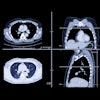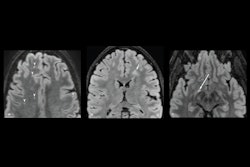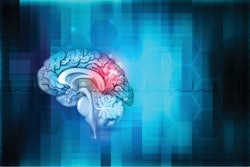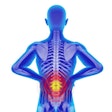Contact sport athletes' brain waste-clearing systems significantly decline in function with repeated head impacts, according to research to be presented at the RSNA meeting.
"Understanding repeated head [trauma's] impact on the glymphatic system is crucial for early detection and management of neurodegenerative risk in contact sport athletes," wrote a group led by Dhanush Amin, MD, of the University of Alabama at Birmingham and Cleveland Clinic Nevada in Las Vegas.
Sports-related traumatic brain injuries make up about a third of all brain injury cases, and boxing and mixed martial arts are major contributors, the group explained, noting that repeated head impacts are risk factors for neurodegenerative and neuropsychiatric disorders. As for the glymphatic system, it is a network of fluid-filled channels that is key to clearing waste products from the brain, and in athletes subject to regular head impacts, this system's function can significantly decline.
"The recently discovered glymphatic system is like the brain's plumbing and garbage disposal system," Amin said in an RSNA statement. "It's vital for helping the brain flush out metabolites and toxins."
Amin and colleagues conducted a study that included data taken from the Cleveland Clinic's Professional Athletes Brain Health Study (PABHS) from 280 professional boxers and mixed martial arts fighters and 20 matched healthy controls. All underwent an MRI exam called diffusion tensor imaging along the perivascular space (DTI-ALPS). (DTI-ALPS is a noninvasive biomarker that can measure and analyze water movement in and around the spaces that surround the glymphatic system; these spaces act as drainage pathways, regulate fluid balance, transport nutrients and immune cells, and protect the brain from damage, the group noted.) Of the 280 participants, 95 were cognitively impaired at baseline.
 Color display of diffusion tensor imaging indicating the distribution of projection fibers (z-axis: blue), association fibers (y-axis: green), and the subcortical fibers (x-axis: red). Three regions of interest are placed in the area with projection fibers (projection area), association fibers (association area), and subcortical fibers (subcortical area) to measure diffusivities of the three directions (x, y, z).RSNA
Color display of diffusion tensor imaging indicating the distribution of projection fibers (z-axis: blue), association fibers (y-axis: green), and the subcortical fibers (x-axis: red). Three regions of interest are placed in the area with projection fibers (projection area), association fibers (association area), and subcortical fibers (subcortical area) to measure diffusivities of the three directions (x, y, z).RSNA
The investigators hypothesized that repeated head impacts would cause lower DTI-ALPS measures in cognitively impaired fighters compared with healthy controls, and that these measures would correlate with the total number of knockouts in the impaired fighters.
The study results were slightly contrary to this hypothesis, however, in that the team reported a significantly higher glymphatic index among impaired fighters that deteriorated over time with the total number of knockouts. It also found that in athletes with continued trauma, glymphatic function significantly declined.
"We believe that the glymphatic index was initially high in the impaired athlete group because the brain initially responds to repeated head injuries by ramping up its cleaning mechanism, but eventually, it becomes overwhelmed," Amin said. "After a certain point, the brain just gives up."
The study results could offer a way to better understand the effect of repeated head impacts on the glymphatic system and thus detect and manage neurodegenerative risk in contact sport athletes, according to Amin.
"If we can spot glymphatic changes in the fighters before they develop symptoms, then we might be able to recommend rest or medical care or help them make career decisions to protect their future brain health," he said.




















